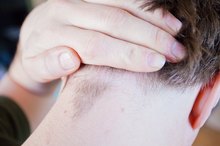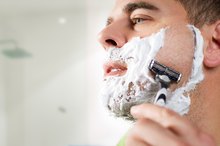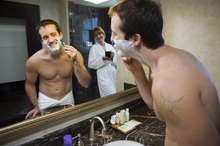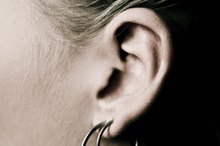What does fact checked mean?
At Healthfully, we strive to deliver objective content that is accurate and up-to-date. Our team periodically reviews articles in order to ensure content quality. The sources cited below consist of evidence from peer-reviewed journals, prominent medical organizations, academic associations, and government data.
The information contained on this site is for informational purposes only, and should not be used as a substitute for the advice of a professional health care provider. Please check with the appropriate physician regarding health questions and concerns. Although we strive to deliver accurate and up-to-date information, no guarantee to that effect is made.
Home Remedy for Ingrown Nose Hair
An ingrown nose hair can cause pain and itching in the nostril. A nose hair can become ingrown if you trim or remove nose hair and it curves around and begins to grow into the skin, which causes irritation. According to the University of Miami Health System, an ingrown hair usually heals on its own; however, there are ways to help the ingrown hair to heal faster and prevent problems, such as infection 1.
Place a clean towel in the hottest water you can stand. Wring the towel out so it is damp.
How to Dislodge Deep Ingrown Underarm Hair
Learn More
Put the moist, warm towel on the outside of the affected nostril. Leave it there until the towel gets cool.
Repeat steps 1 and 2 until the compress has been applied to the nostril for a total of 20 minutes.
How to Remove Ingrown Arm Hair
Learn More
Wet the towel again and wring it out. Place a corner of the towel into the nostril and press it gently against the ingrown hair. Leave it on there until the towel cools off and then remove it.
Moisten the towel again and place it back into the nostril. Gently rub the ingrown hair in a circular motion to try to release the ingrown hair.
Apply triple antibiotic ointment to the affected nostril to minimize the risk of infection.
Tips
You can repeat this treatment up to three times per day. You may have to do this a few days in a row before you actually release the ingrown hair.
Warnings
If you experience intense pain, severe swelling or abnormal drainage from the affected nostril, a trip to the doctor is necessary as these are signs of a possible infection. According to the Centers for Disease Control and Prevention, the Staphylococcus aureus is a bacterium that is commonly found in the nose.
Related Articles
References
- University of Miami Health Systems: Ingrown Hairs
- Centers for Disease Control and Prevention: CA-MRSA
- MedlinePlus. Acne.
- Cleveland Clinic. Ingrown hair. Updated February 28, 2018.
- Merck Manuals. Ingrown beard hairs. Updated October 2019.
- Cleveland Clinic. Ingrown hair: Management and treatment. Updated February 28, 2018.
- Ogunbiyi A. Pseudofolliculitis barbae; current treatment options. Clin Cosmet Investig Dermatol. 2019;12:241-247. doi:10.2147/CCID.S149250
- MedlinePlus. Folliculitis. Updated October 8, 2018.
- Zaenglein AL, Pathy AL, Schlosser BJ, Alikhan A, Baldwin HE, et. al. Guidelines of care for the management of acne vulgaris. Journal of the American Academy of Dermatology. 2016; 74(5): 945-73. doi:10.1016/j.jaad.2015.12.037
Writer Bio
Casey Holley is a medical writer who began working in the health and fitness industries in 1995, while still in high school. She has worked as a nutrition consultant and has written numerous health and wellness articles for various online publications. She has also served in the Navy and is pursuing a Bachelor of Science in health administration from the University of Phoenix.








